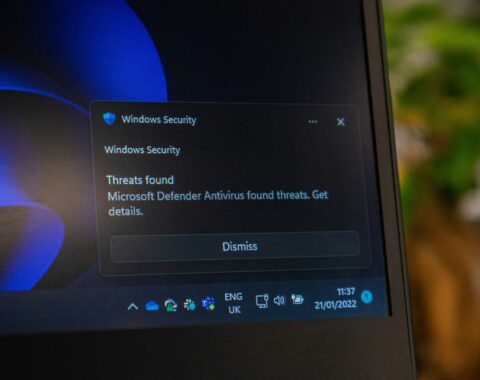by Kimberly Rux
It seems like every day we come across the news of a new company that has suffered from a ransomware attack and is now dealing with the aftermath. It’s a frightening thought, but the reality is that it’s not a matter of if it will happen, but when. To better safeguard against such attacks, it’s important to be well-informed about what ransomware is, how it can affect an organization, its employees, and its customers, and what steps can be taken to recover from it. Ransomware, a malicious software designed to deny access to a computer system or data until a ransom is paid, remains a formidable threat in today’s digital landscape. The insidious nature of ransomware lies in its ability to infiltrate a network swiftly and propagate across multiple devices, encrypting crucial files and rendering them inaccessible to users. Understanding the mechanisms through which ransomware operates is paramount for organizations to fortify their defenses and mitigate potential damage.
Upon infiltrating a network, ransomware typically exploits vulnerabilities in software or gains entry through phishing emails and malicious attachments. Once inside, it can swiftly propagate across interconnected devices, capitalizing on weak security protocols and outdated software. Its ability to evade detection underscores the importance of robust cybersecurity measures and constant vigilance.
The encryption process deployed by ransomware is sophisticated, employing algorithms that scramble data and render it unreadable without the corresponding decryption key. This encryption extends to files stored on local drives, shared network drives, and even cloud storage, amplifying the impact of the attack and causing widespread disruption to operations.
Remediating a ransomware attack demands a multifaceted approach that combines technical expertise with strategic decision-making. Isolating infected devices to prevent further spread, identifying the strain of ransomware to determine potential decryption methods, and establishing communication channels with attackers are crucial steps in the remediation process. However, paying the ransom is not recommended, as it not only fuels the ransomware economy but also provides no guarantee of data recovery. Here are some steps every organization should consider when conducting ransomware remediation:
- Isolation and Containment: The first priority upon detecting a ransomware attack is to isolate infected devices and contain the spread of the malware within the network. This may involve disconnecting compromised systems from the network or shutting them down entirely to prevent further encryption of files and data.
- Identify the Ransomware Variant: Determining the specific strain of ransomware infecting the network is crucial for assessing the severity of the attack and identifying potential decryption methods. Security experts may analyze ransom notes, encrypted files, or utilize specialized tools to ascertain the variant of ransomware deployed.
- Assess Damage and Impact: Conduct a comprehensive assessment of the damage caused by the ransomware attack, including the extent of data encryption, systems affected, and potential loss of critical information. Understanding the impact is essential for prioritizing recovery efforts and allocating resources effectively.
- Backup Verification: Verify the integrity and availability of backup systems to ensure they remain unaffected by the ransomware attack. Backups should be stored securely and regularly tested to guarantee their reliability for data restoration purposes.
- Data Restoration: Begin the process of restoring encrypted data from backup sources once the ransomware has been contained and removed from the network. This may involve restoring files from offline backups, cloud storage, or utilizing decryption tools if available.
- Strengthen Security Measures: Evaluate existing security protocols and implement enhancements to fortify defenses against future ransomware attacks. This may include updating software and firmware, patching known vulnerabilities, and deploying advanced threat detection mechanisms.
- Incident Response and Communication: Maintain open lines of communication with internal stakeholders, external partners, and regulatory authorities throughout the remediation process. Establish an incident response team tasked with coordinating efforts, documenting procedures, and communicating updates to affected parties.
- Employee Training and Awareness: Conduct training sessions to educate employees on ransomware prevention best practices, recognizing phishing attempts, and reporting suspicious activity promptly. Building a culture of cybersecurity awareness is essential for mitigating the risk of future attacks.
- Continuous Monitoring and Evaluation: Implement ongoing monitoring and evaluation processes to detect any signs of recurring ransomware activity or potential security gaps. Regularly review and update incident response plans and security policies to adapt to evolving threats.
- Post-Incident Analysis: Conduct a thorough post-incident analysis to identify lessons learned, areas for improvement, and opportunities for enhancing resilience against future ransomware attacks. Documenting key findings and recommendations is essential for refining incident response procedures and strengthening security posture.
The aftermath of a ransomware attack can be emotionally and financially taxing for individuals and organizations alike. The loss of sensitive data, operational downtime, and reputational damage can have far-reaching consequences, affecting productivity and eroding trust among stakeholders. Moreover, the remediation process itself can be arduous, requiring extensive data restoration efforts and stringent security protocols to prevent future breaches.
Preventing ransomware attacks requires a proactive approach that prioritizes cybersecurity hygiene and ongoing education. Regular software updates, robust antivirus software, and firewalls can fortify defenses against known vulnerabilities and malware strains. Additionally, implementing email filters to detect phishing attempts, conducting regular employee training on cybersecurity best practices, and enforcing a strict data backup policy can mitigate the risk of ransomware infiltration.
Ransomware poses a significant threat to organizations of all sizes, capable of causing extensive damage and disruption. By understanding its mechanisms, implementing robust security measures, and fostering a culture of cyber resilience, organizations can bolster their defenses against ransomware attacks and mitigate potential consequences. Vigilance and preparedness are paramount in safeguarding against this evolving threat landscape. At Southridge Technology, we are fully confident in our ability to provide top-of-the-line services that can effectively safeguard your organization against ransomware and other types of malware. Get in touch with us today and let our expert team help you implement the right technology to protect your business.
 |
Kim Rux joined Southridge Technology in 2018 as a technician and has since transitioned to Marketing Director and Operations Administrator. Known for her technical skills and dedication to mentoring, she fosters a collaborative workplace culture. Kim’s creativity and strategic thinking have significantly enhanced Southridge’s marketing efforts. Outside of work, she enjoys photography and spending time at home reading and cooking with her partner, Spencer, and her feline companion, Kat. |
| Southridge Technology is a Connecticut based, whole-systems management IT service provider specializing in cyber-security and industry compliance; business continuity; WAN management, communications, and email hosting; cloud storage and backup solutions; and live, local, real-time monitoring and emergency response 24/7/365. We support organizations whose sizes range from one desktop to systems with over 400 endpoints. Our clients include both non-profit and private industries throughout the Northeast. |  |




